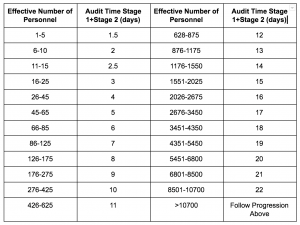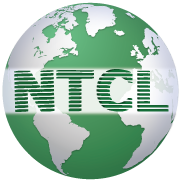The Auditing process details (at a high level) the steps by step approach taken by our team as part of delivering our Auditing services to our client base. NTCL has a well-defined and proven track record delivering auditing services, our auditing service covers the who, what, how, when, and why relating to the identified audit project activities. The Audit process outlines a high-level step-by-step approach on how the audit project activities are to be conducted.
- The three ways audits can be conducted are:
- On-site audits are performed in full days. The number of days needed for an audit depends on several factors including size, complexity, risk, and nature of an organization.
- Remote audits may be performed via web meetings, teleconferencing, or electronic verification of processes. Remote audits are less common and typically not as effective as on-site audits.
- Self-audits do not always mean an internal audit. A self-audit can be requested of your customer to eliminate the need for them to use their resources and still offer some assurance that you are meeting requirements.
- NTCL offers three different Auditing services to our client base:
- Internal Auditing– Internal audits are audits that are performed by your organization and are a self-examination of your organization’s ISO Standard, performed on-site. Internal audits have many benefits including preparing your organization for external audits. The internal auditor must be independent of the area being audited to ensure objective results. We offer internal audit training to ensure your internal auditors are able to perform an effective internal audit as well as an audit checklist to help guide your internal auditors on covering all areas. Internal audits will be used to assess conformity, evaluate the effectiveness and identify opportunities for improvement. When you perform an internal audit, you will be able to compare your quality management system to the requirements and understand if there are any non-conformances.
- External auditing- External audits include customer, supplier, certification, and surveillance. A customer audit is where an existing, or potential customer, audits your organization to verify you can or are meeting their requirements. If you are auditing an existing or potential supplier, we consider this a supplier audit.
- Certification Auditing- Certification audits are most often broken into two stages. Stage one audit is performed to determine an organization’s readiness for stage two of the audit. Stage one is oftentimes conducted remotely in order to not spend additional costs on travel. If the auditor determines you meet the minimum criteria for the stage one audit, your organization will proceed with the stage two audit. Stage two audits will always be on-site audits. This is where the auditor will interview your staff and review your documented information(procedures, records, etc.) to verify you are meeting the ISO standard requirements. Certification audits are typically conducted every three years. After certification, your registrar will check-up on your periodically using surveillance audits to verify you are still upholding your ISO standard & the ISO requirements. Surveillance audits are very much like certification audits, with the exception that they are not issuing or re-issuing a certificate. These are typically conducted by your registrar annually.
The Auditing application form can be initiated by contacting one of our sales teams or via the online portal. NTCL simple and effective methodology to manage our Auditing services in an easy-to-follow step-by-step approach is in line with ISO 17021 standards.
The Auditing process is described as below:
- AUDIT – Enquiry & Quotation proposal:
- An Audit application form is completed and submitted online or offline by a client.
- The Auditing service delivery process begins with the completion of the Auditing Application form.
- The application form is received by the NTCL Information team member and is used to initiate the remainder of the Auditing Process.
- The Auditing Application form can be initiated by contacting one of our marketing team and Collected all the missing information (Such as Scope, expected deliverables, audit plan, Management Representative, Timelines, Team members, Reporting & Management of change, etc.) send the Audit proposal to the client.
- The Audit proposal document establishes the foundation of the project engagement between NTCL and the client on who, what, how, why, and when, and the audit project activities are being conducted.
- CONDUCTING AUDIT:
Audits are conducted as per the audit plan schedule, the identified requirements list, and or the selected standard being audited against. The audit process consists of as below, but not limited to:
- Opening meeting,
- Facility visit,
- Employee interviews & open discussions with client representatives,
- Documents Review & Observations of staff performing daily work activities,
- Closing Meeting
All NTCL auditors follow the requirements of the ISO 17021 standards, and the auditing activities are based on collecting supporting evidence of conformity to a given set of requirements based on a random sampling of a number of work activities within a number of departments of the organization being audited.
- AUDITING – REPORTING
Audit reporting is the final step in the auditing process, the audit report is developed to be delivered in a structured manner to highlight all the findings and relevant assessment of the given findings.
All NTCL auditors provide one of three types of reporting for a given audit.
- Verbal notification that the Audit has been terminated due to Major NC being identified during the audit, followed up with a written audit report supporting the reasoning for the audit termination.
- Verbal reporting of the findings via a close meeting presentation at the end of the audit process.
- A final written audit report highlighting the audit assessment and a recommendation for certification if applicable.
- AUDITING – POST AUDIT
The completion of the audit is a very rewarding experience and huge milestone a huge milestone for any organization. However, most organizations do not leverage the audit outcome to an optimal result.
The number of audit days needed for an organization.
Audit time is determined by the size, complexity, risk, and nature of an organization. ISO 9001:2015 Audit Days based on a number of employees as an example:

Audit time may fluctuate between the initial, surveillance and re-certification audits. A certification body could determine after an initial audit that more or less time is required for the surveillance audit.
Audit time may include remote auditing techniques such as web meetings, teleconferencing, and electronic verification of the client’s processes. This is not uncommon for certification bodies, especially for stage one audits.
